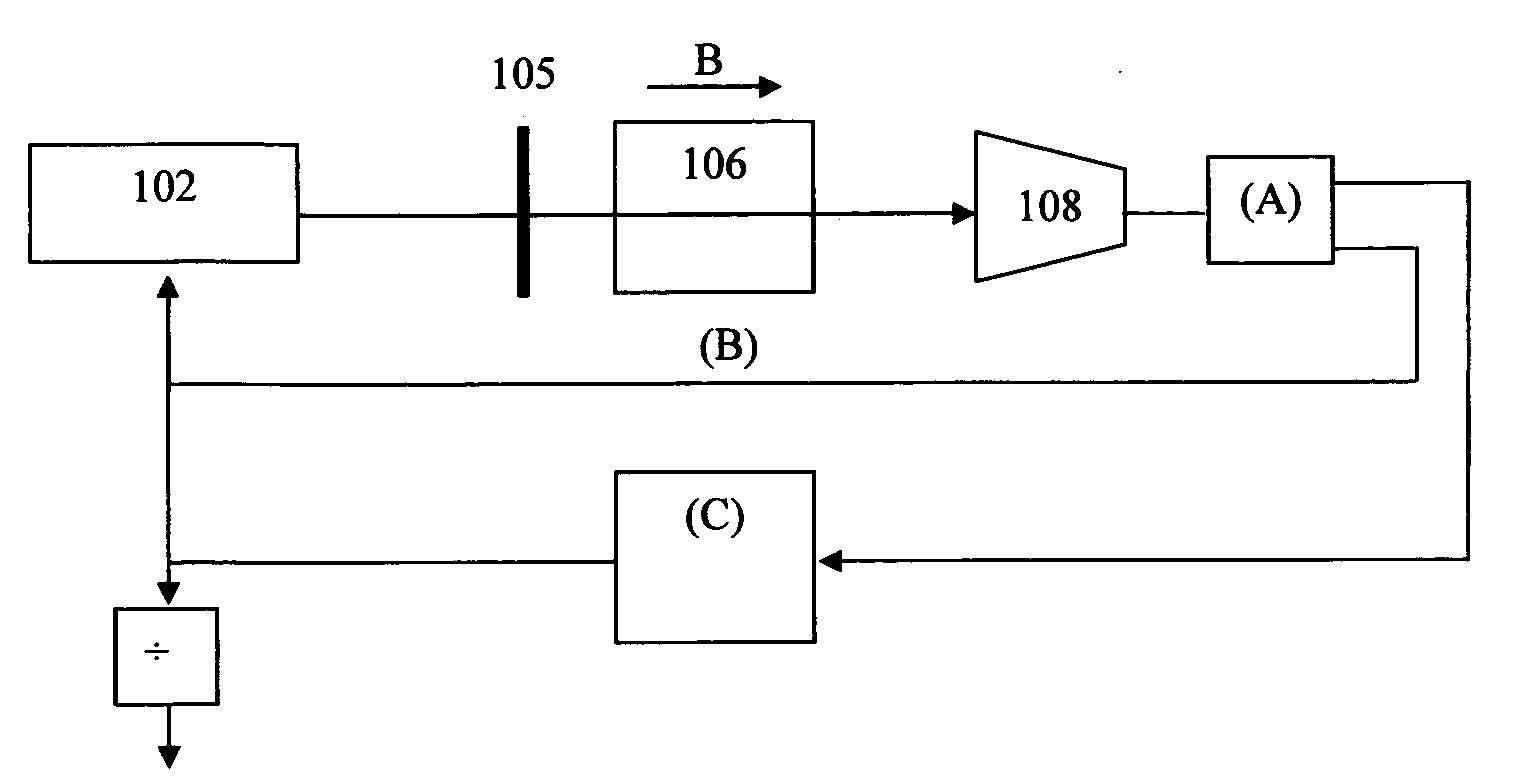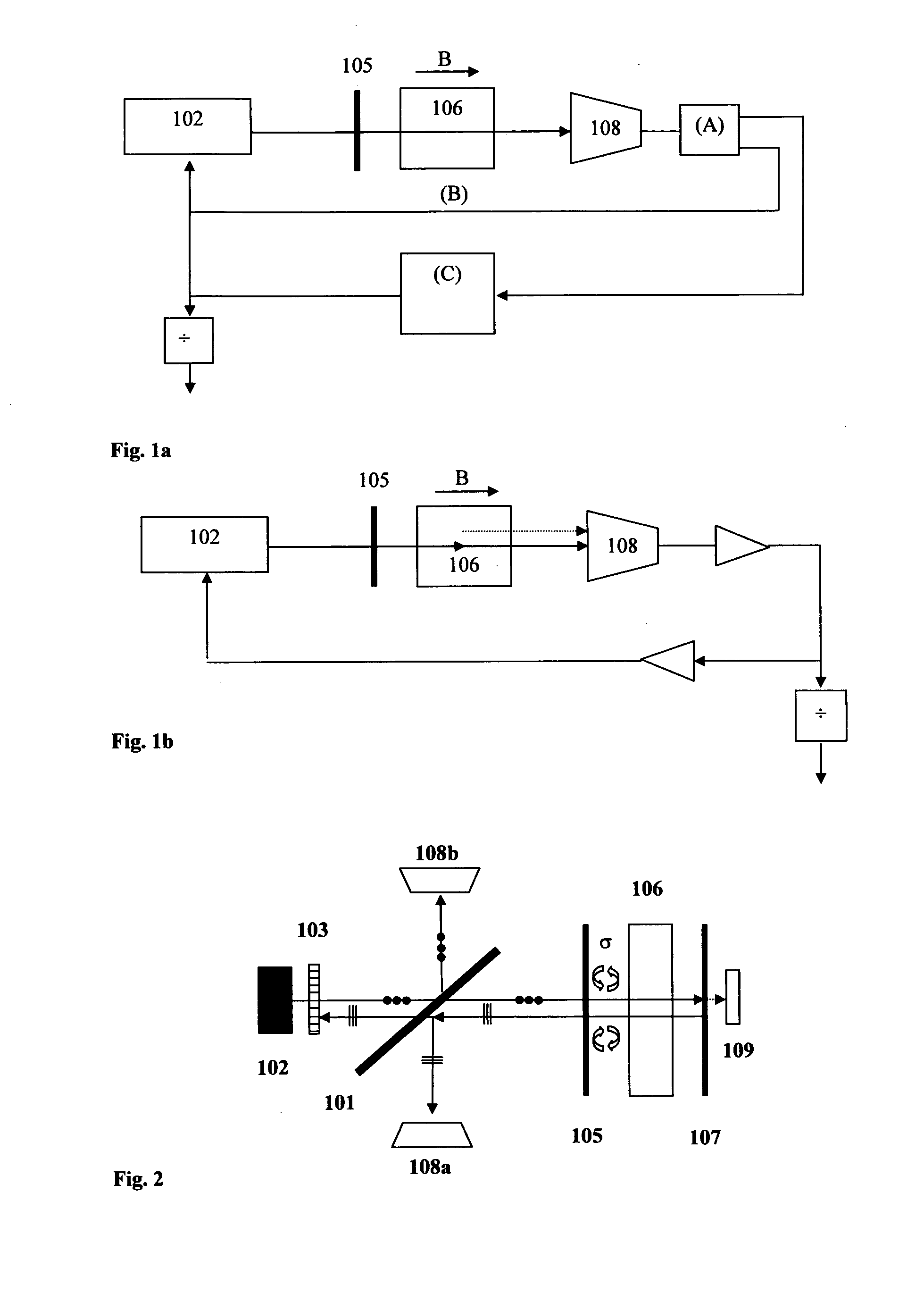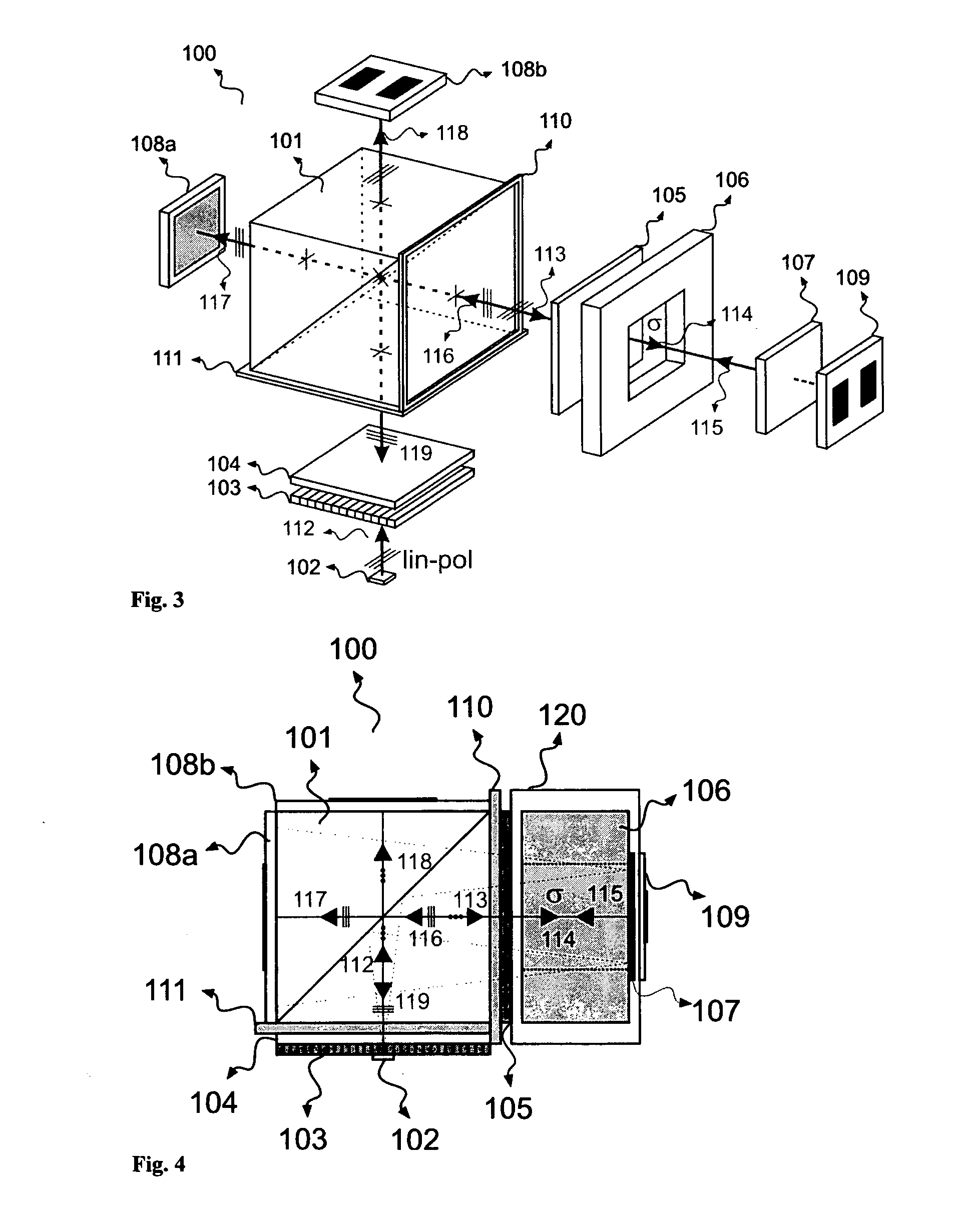Device for an atomic clock
a technology of atomic clocks and devices, applied in the field of devices for atomic clocks, can solve problems such as unimplemented double-passage arrangements
- Summary
- Abstract
- Description
- Claims
- Application Information
AI Technical Summary
Problems solved by technology
Method used
Image
Examples
Embodiment Construction
[0016]FIG. 1a illustrates the schematic diagram of the CPT atomic clock comprising a laser diode 102, a λ / 4 plate (or quarter-wave plate) 105, a gas cell (atomic) 106, a magnetic field B, a first photodetector 108, control electronics (A) and a microwave oscillator (C). The laser beam having passed through the gas cell 106 is picked up by the first photodetector 108 and is used by the control electronics to stabilize the frequency of the laser (B) and the frequency of the microwave oscillator (C).
[0017]FIG. 1b illustrates the schematic diagram of a closed loop mode Raman oscillator comprising a laser diode 102, a λ / 4 plate (or quarter-wave plate) 105, a gas cell (atomic) 106, a magnetic field B, a first photodetector 108, a microwave frequency divider, and an RF amplifier. The laser beam emitted by the laser diode 102 undergoes, in the gas cell 106, a light-atom interaction which generates a complementary beam called a Raman beam. The two light beams are picked up by the first photo...
PUM
 Login to View More
Login to View More Abstract
Description
Claims
Application Information
 Login to View More
Login to View More - R&D
- Intellectual Property
- Life Sciences
- Materials
- Tech Scout
- Unparalleled Data Quality
- Higher Quality Content
- 60% Fewer Hallucinations
Browse by: Latest US Patents, China's latest patents, Technical Efficacy Thesaurus, Application Domain, Technology Topic, Popular Technical Reports.
© 2025 PatSnap. All rights reserved.Legal|Privacy policy|Modern Slavery Act Transparency Statement|Sitemap|About US| Contact US: help@patsnap.com



